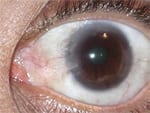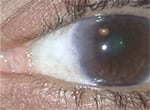Dr. Zdenek has performed over 45,000 surgeries. Everything from Cataract Surgery to LASIK. Below you will find more information on the different surgeries that Dr. Zdenek performs in his surgery center
Cataract Surgery
Clouding Of The Lens
Cataract Surgery is a time tested procedure which removes the natural lens and its cloudiness. A new lens is then inserted in the same place. The procedure takes about 20 minutes as an outpatient procedure and my patients go home with a patch on their eye.
The Crystalens Accomadating Lens
See Near, Far And Everything In Between!
The First and Only FDA-Approved Accommodating Lens delivers comprehensive vision quality without compromise. Designed like your natural lens, the crystalens works in concert with the eye's natural muscle, crystalens "flexes" to accommodate near, intermediate and distance subjects.
No lens comes closer to mirroring the function of the natural lens.
LASIK
Get Rid Of Your Glasses Or Contacts For Good!
(Laser In-Site Keratomileusis) is performed with an Excimer Laser that combines argon and fluoride gases to produce a cool, ultraviolet light that does not cut or burn tissue. It is a precise and minimally invasive method of reshaping the cornea which helps the eye to focus properly. This procedure can reduce or possibly eliminate the need for glasses or contact lenses.
LASIK is about a 20-minute procedure and is performed here in my office. My patients typically drive themselves in the next day (without glasses or contacts!) to see me for their post-operative exam.
Pterygium Removal
(Pterygium, Ter Ij' Ee Um)
The wedge-shaped growth (see pictures, provided by IOP, Inc.) on the eye is surgically removed. The area is then cleaned to help prevent regrowth (recurrent). The area can be irritated with a sandy/gritty feeling for a few days following the surgery. Along with a red eye.

The picture on the left is of a patient with a Pterygium picture provided by IOP, Inc

The picture on the right is of a patient 100 days after Pterygium removal surgery with Amniotic graft picture provided by IOP, Inc
Mass Removal
Dr. Zdenek is a perfectionist when it comes to removing facial masses. If you have a mass on your eyelid, for example, Dr. Zdenek will take the time to preserve as many eyelashes as possible and keeping with the contour of your skin. This ensures excellent healing, minimal scarring and decreases irregular skin regrowth during the healing period. Some mass removals can be done in the exam chair and some need to be completed in his surgery center. The location of the surgery depends on the location of the mass, the size and the precision necessary to complete the surgery.
Blepharoplasty
Through a surgical procedure known as a Blepharoplasty or Blepharoptosis Repair (blepharo means eyelid and ptosis refers to the drooping), this condition may be remedied. Under local anesthesia, the patient has the excess skin and/or fat pads surgically removed. A fine incision is made in the upper eyelid which follows one of the natural creases. Stitches are put in which are removed in 1-2 weeks. Although everyone heals a little bit differently, patients usually experience very little discomfort, but they do notice temporary swelling and bruising around the eyelids. Again, this is just part of the healing process and these conditions will go away. In some situations, the puffiness is just in the area beneath the eyes. This can also cause an unwanted tired or 'older' look to the individual. Again, through a minor surgical procedure under local anesthetic, the cause of the puffiness can be removed. This procedure is usually performed through a delicate incision that is made under the eyelid so there is no visible evidence on the skin.
Dr. Zdenek takes great care in reshaping his patient's eyelids. Whether it be upper or lower eyelids, Dr. Zdenek will take the time to map out his desired surgical area including the location of nerve endings and veins. This helps his patients to heal with minimal bruising and irritation. He may or may not use cautery to help with bleeding during surgery. The benefit of using cautery doe snot necessarily outweigh the result. If Dr. Zdenek can avoid using cautery, he is better able to visualize the patient's potential results during surgery.
If the Pterygium has already been removed and does grow back, Dr. Zdenek can suggest the patient have a graft placed after the Pterygium is removed. The surgical use of preserved amniotic membrane has been reported for decades as a viable and advantageous procedure. Using this amniotic graft will allow Dr. Zdenek to maintain the patient's conjunctiva providing a recovery with minimal pain and discomfort.

